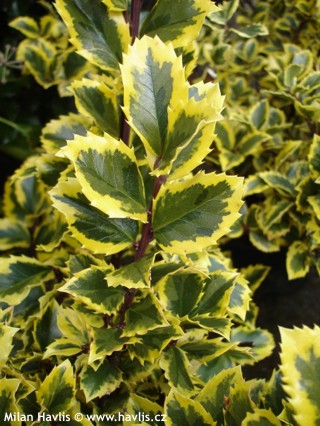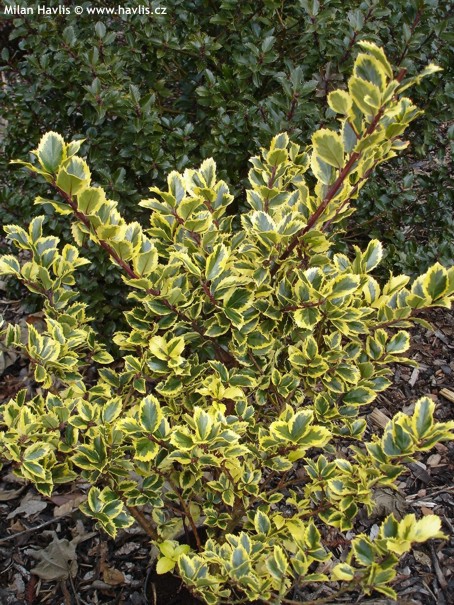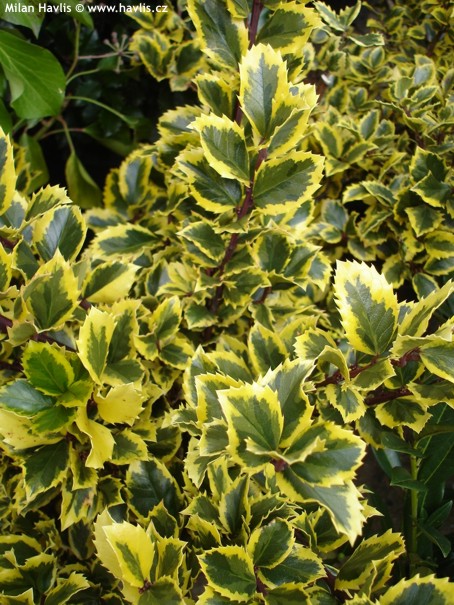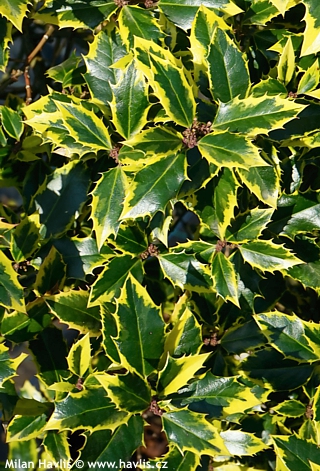Ilex x meserveae 'GOLDEN PRINCE' blue holly, Meserve holly - male
size/type
medium-sized shrub,medium-sized shrub
usual height
1,5-3m
usual width
1-2m
leaves
evergreen broadleaf
colour of leaves
flowers
insignificant or non-blooming
location
full to partial sun
soil type
acidic (peaty) to neutral
soil moisture requirements
evenly moist (dislikes drought)
USDA zone (lowest)
5 (down to -29°C)
winter protection
for zone 5+6

for zone 7

categorized
Description of the plant:
Golden Prince is a fantastic novelty whose origin we have not located yet. It is a variegated form of a blue holly, closely related to Blue Prince®. It has the same leaf shape, size, and habit. Leaves are glossy, toothed but not spiny, golden yellow at margins and both light and deep green in the centres. New branches are bright burgundy red which gives the plant another colour feature. It is a male plant that does not produce fruits but is a pollinator for female plants of this group. It has numerous, tiny white flowers in the spring and often again in the autumn. Meserveae hollies are called “blue hollies” thanks to the shade of the species leaves that are dark green with bluish tint. And the name meserveae was chosen for its cultivator, Kathleen Meserve, who, literally on her windowsill, made a cross of ilex rugosa and ilex aquifolium in 1950´s to achieve excellent cold hardiness on a fabulously foliaged evergreen plant. She died in 1999 at the age of 93 but left behind an impressive line of these evergreen superbly hardy varieties.
Blue hollies need almost no maintenance if you provide them with slightly acidic soil at the beginning and enough moisture for the first couple of years to enable establishing extensive root system. They are beautiful and trouble-free dense shrubs with no defoliated twigs even without pruning. They grow moderately fast and make dense foliage in the lower parts while they push new branches upwards. This feature is employed when using this holly into a hedge.
Another huge advantage is its above mentioned hardiness. It can stand very low temperatures without any damage: this one is supposed to survive -30°C and thrive in USDA zone 5, perhaps 4 with protection. This fact makes blue hollies the most sought after evergreen plants in our climate.
Last update 09-03-2009.
QUICK PRICE OVERVIEW
CURRENTLY SOLD OUT
WANT TO TRY A SIMILAR PLANT?
















